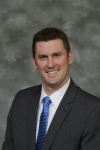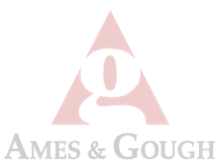THE ZWEIG LETTER DECEMBER 7, 2020, ISSUE 1370
Design firms in the process of renewing their professional liability insurance will find the marketplace generally stable and competitive, even amid uncertainty created by COVID-19.

Jared Maxwell

Tom Marchetti
There continues to be an abundance of capacity, which is creating downward pressure on rates. Nonetheless, more insurers are trying to achieve a rate increase between 5 percent and 10 percent on renewals. Although some insurers have targeted across the board rate increases on all renewals, accounts with a clean five-year claim record and/ or with lower risk practices and project types have seen any rate increases fall well below insurers initial targets.
Overall, AEC professional liability claims experience began to deteriorate in 2019 with many insurers seeing greater claim frequency, higher severity, or both. Increases in claims correlate to the supply of the AEC workforce versus the demand in the construction industry. Should the increased pace of claims activity continue, the insurers will, at some point, require further rate action.
“In this environment, design firms need to remain vigilant about their risk management measures, including practicing sound contract hygiene.”
Meanwhile, many AEC professional liability underwriters generally are adopting targeted approaches to rate adjustments, focusing rate decisions on a design firm’s disciplines and project mix, as well as certain geographic regions associated with worsening claims experience or higher risk.
Insurers also are carefully monitoring evolving and expanding exposures surrounding the COVID-19 pandemic. Notably, greater construction complexity, higher costs, design resiliency (as it relates to climate change), and state laws adversely impacting design firms are areas of increasing concern for insurers.
In this environment, design firms need to remain diligent about providing high-risk services in-house or in offering these services through subconsultants, as each approach has inherent potential liability implications. With respect to the use of subconsultants, it may be prudent for the client to hire the subconsultant directly if the work involves a high-risk discipline to help insulate the AEC firm from direct liability.
At the same time, adopting and adhering to sound internal risk management protocols are essential, including due diligence when contemplating a merger or acquisition. This should involve analysis of the target firm’s practice areas, project mix, and loss history. In the current environment, don’t overlook assessing any potential partner’s cyber security; their vulnerability may expose your firm and clients to devastating breaches and attacks.
Despite these developments and considerations, as long as capacity remains strong, AEC firms generally continue to be in a favorable position as buyers of professional liability insurance. In particular, firms with risk profiles that appeal to the various insurers’ appetites may be the beneficiaries of little to no rate action.
“By working with an experienced AEC professional liability broker, design firms will be in better position to renew their insurance programs with incumbent insurers, explore potential alternatives in the marketplace and make critical decisions regarding their coverage.”
TIPS FOR ACHIEVING A SUCCESSFUL RENEWAL. As many professional liability insurers work to balance strengthening the performance and profitability of their portfolios with the need to maintain or grow market share and retain profitable business, design firms need to develop and implement a sound strategy as they approach their 2020 insurance renewals. This might involve the following:
- Engage a specialist AEC professional liability These firms can help you assess the insurance marketplace, evaluate individual carriers, review your existing insurance program against your coverage needs, and help enhance your internal risk management procedures and manage your total cost of risk.
- Consider approaching the broader marketplace for competitive quotes. A qualified insurance broker can help you market your program, identify suitable program. Given the perceived constraints with limit capacity, engage an excess insurer that can drop down to a lower attachment point into what historically have been primary layers in the event the primary insurer is no longer competitive or withdraws from the marketplace. So, in these cases it may be useful to identify qualified excess insurers that also have the ability to potentially become the primary layer.
“AEC firms generally continue to be in a favorable position as buyers of professional liability insurance. In particular, firms with risk profiles that appeal to the various insurers’ appetites may be the beneficiaries of little to no rate action.”
- Check with your broker on any new and emerging coverage enhancements and endorsements. To retain or grow their business, many professional liability insurers continue to offer coverage enhancements and supplemental coverages, such as rectification coverage, acquisition endorsements, expenses associated with defending against regulatory or disciplinary actions, limited cyber risk insurance, drone liability coverage, among others.
- Understand how your exposure is being underwritten. Professional liability insurers use different billings methodologies – such as ratable billings, gross billings, weighted billings – as part of their underwriting process. These differences might result either in better or less favorable terms and conditions for any given AEC firm. So, it helps to know the approach taken by your incumbent or potential insurer. For example, billing attributed to international work, studies, or reports is considered low risk and discounted; and abandoned projects often are excluded along with direct reimbursables. AEC firms also need to recognize what underwriters consider higher risk projects, such as residential and infrastructure, and disciplines, including structural engineering. Another key factor for renewals: recent and historical claims experience.
Professional liability insurers and the AEC firms they cover are continuing to deal with the varied impacts of the COVID-19 pandemic and the slowing economy on their current business and outlook for the remainder of the calendar year through early 2021. In this environment, design firms need to remain vigilant about their risk management measures, including practicing sound contract hygiene.
By working with an experienced AEC professional liability broker, design firms will be in better position to renew their insurance programs with incumbent insurers, explore potential alternatives in the marketplace and make critical decisions regarding their coverage options, insurance partners, and program structure. They may also gain insights and direction on risk management practices that will help widen their insurance options and improve their overall performance in these dynamic and challenging times.
JARED MAXWELL is vice president and partner at Ames & Gough. TOM MARCHETTI is vice president and partner at Ames & Gough. Contact them at jmaxwell@amesgough.com and tmarchetti@amesgough.com.
